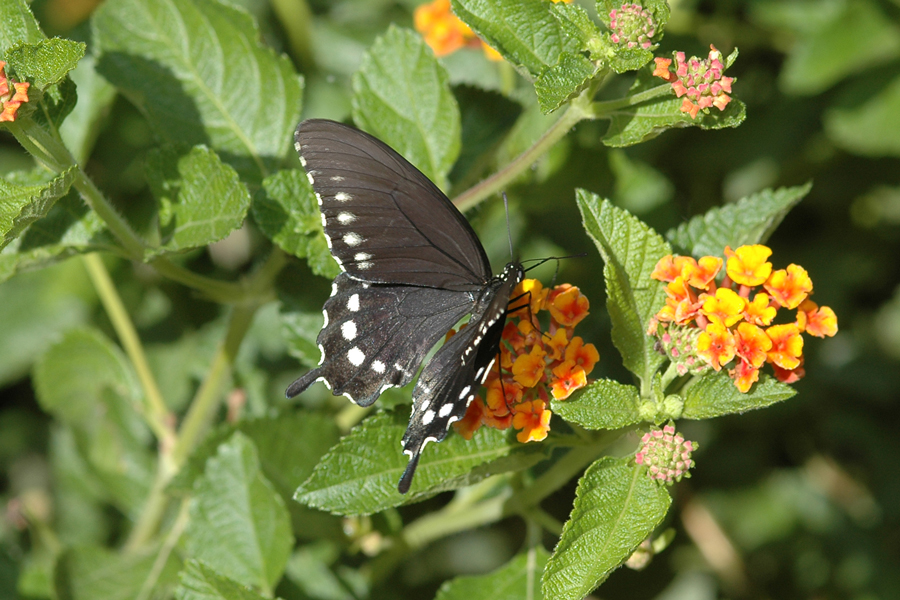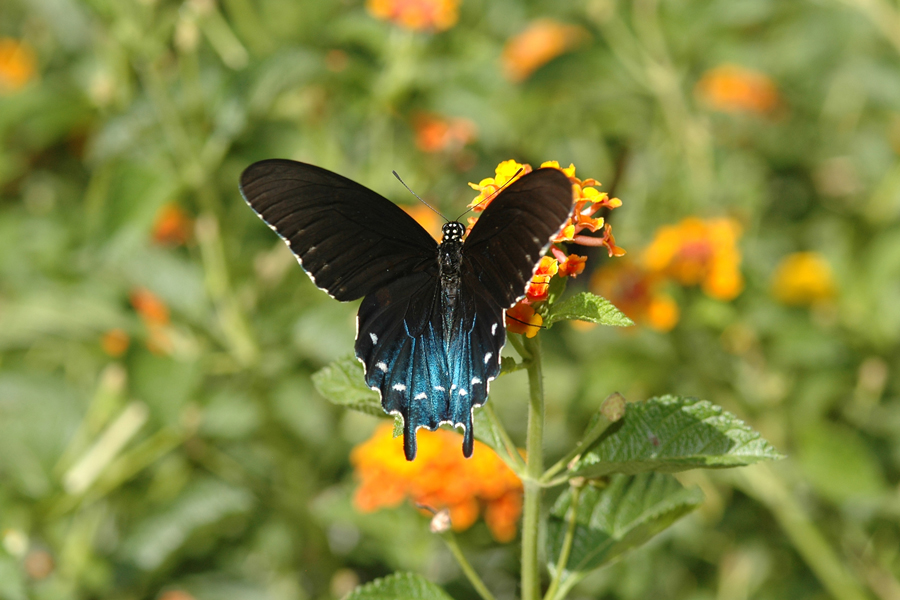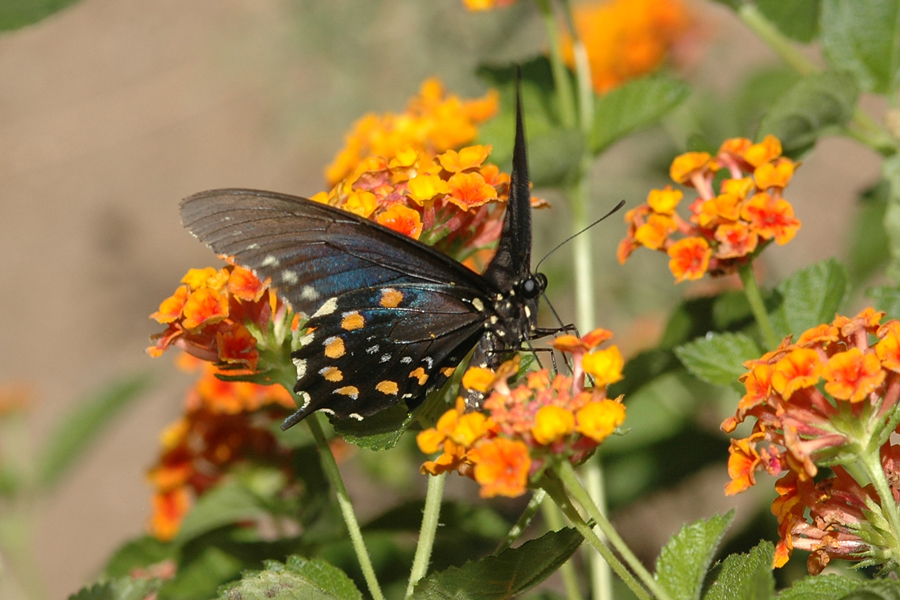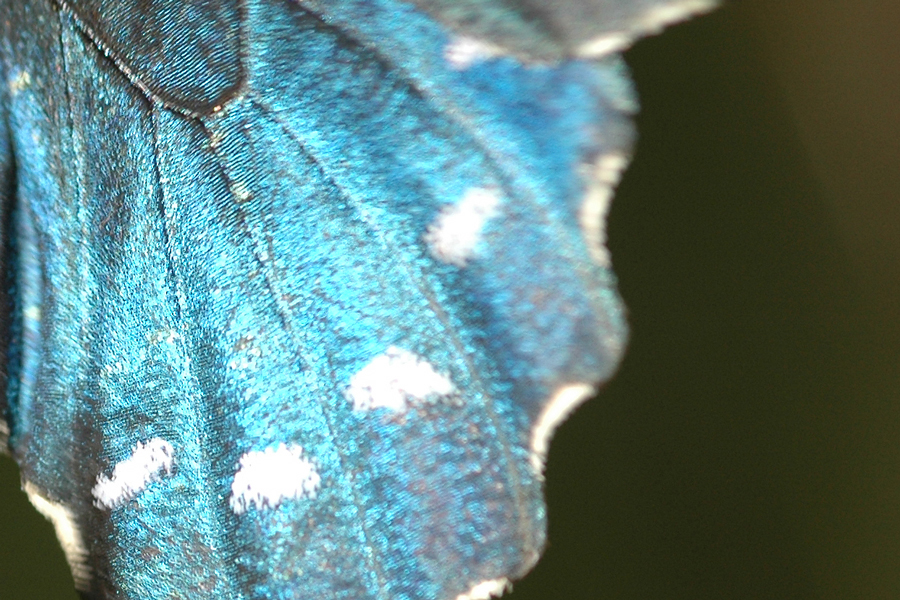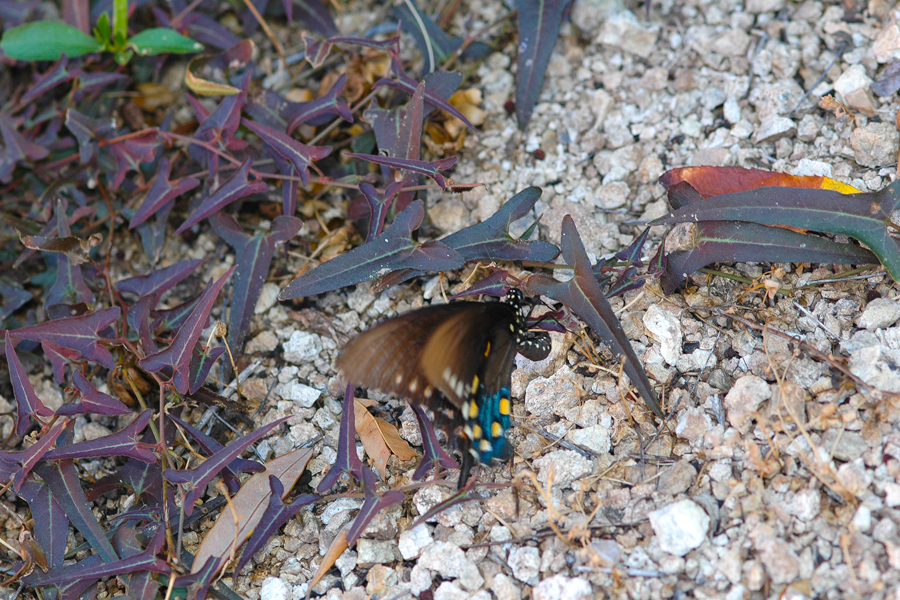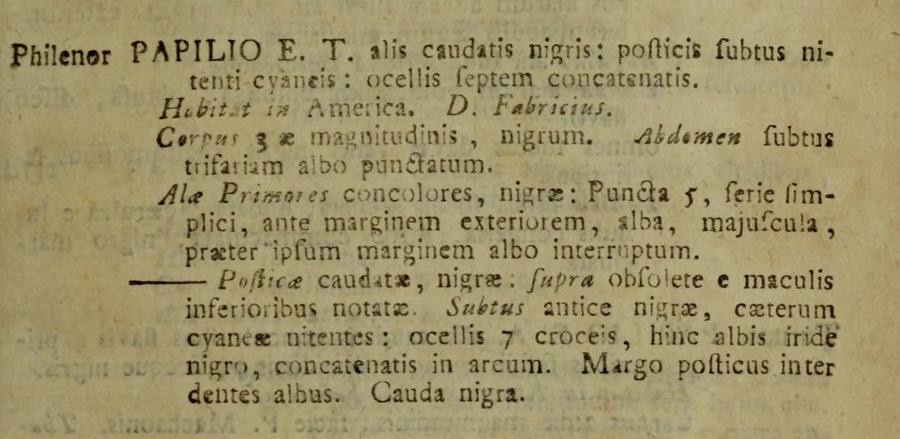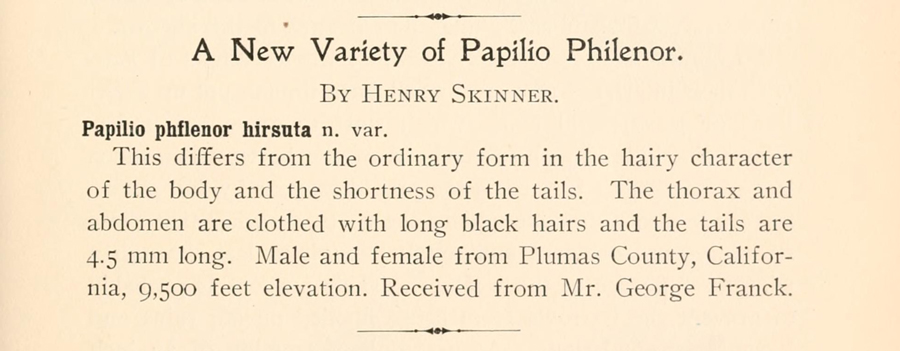Battus philenor
Pipevine swallowtail
The pipevine swallowtail has long been considered a stray into southern California, with two subspecies: nominate philenor and hirsuta. But it may be becoming established where the host, pipevine (Aristochia), is grown. In northern California, Aristochia californica is common, and that plant supports ssp. hirsuta. With no native pipevine in southern California, we may only ever gets strays and ephemeral populations.
The subspecies hirsuta was named by Skinner in 1908 based on the adult body having longer hairs and shorter tails. Few since then mention the tails, instead pointing to it being hairier and smaller overall, and there is mention of larger egg clusters. Strays coming in from Arizona are nominate philenor and use Aristochia watsonii there. I've seen it fly by in the New York Mountains in the Mojave National Preserve (July 2020), a locale mentioned by the Emmels in their 1973 book. A spot I have yet to try is the California Botanic Garden in Claremont, which apparently has attracted pipevine swallowtails for years.
If you see an iridescent blue or blue-green color on the hind wings, it's a male. Both sexes have a single row of light spots. The underside coloration of the hind wings is really beautiful. The caterpillar is also pretty incredible, but I haven't photographed it yet.
This is a Linnaean butterfly, "described" in 1771 with a type locality of "America".
